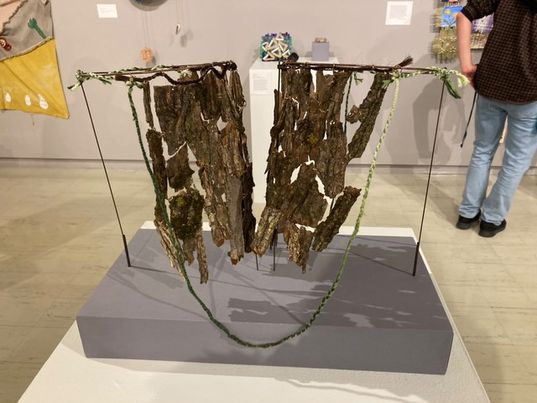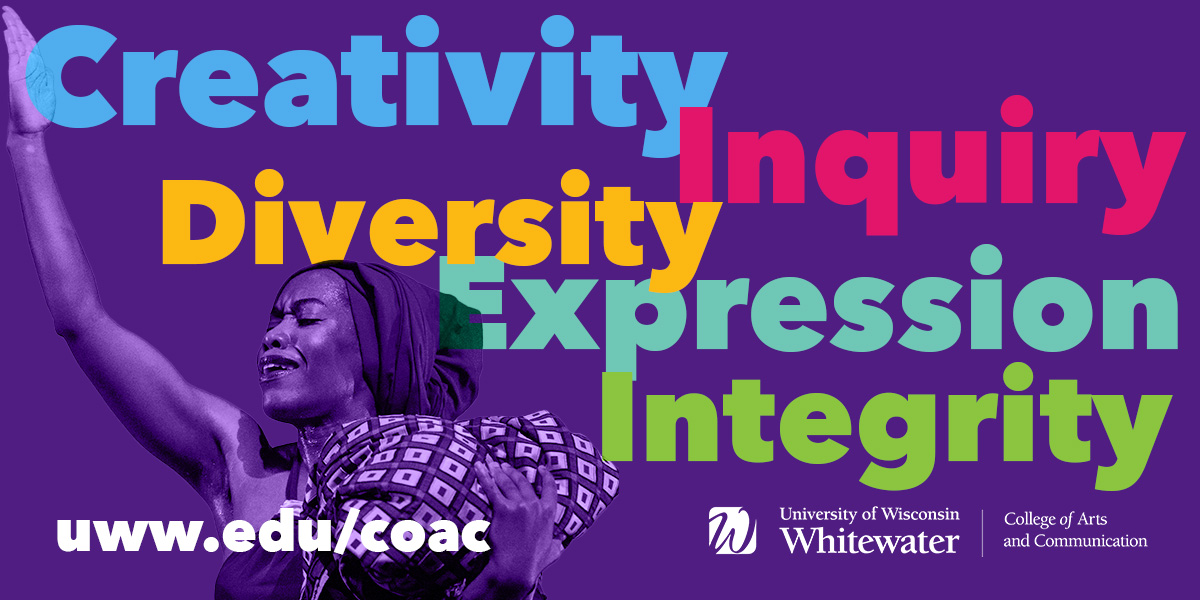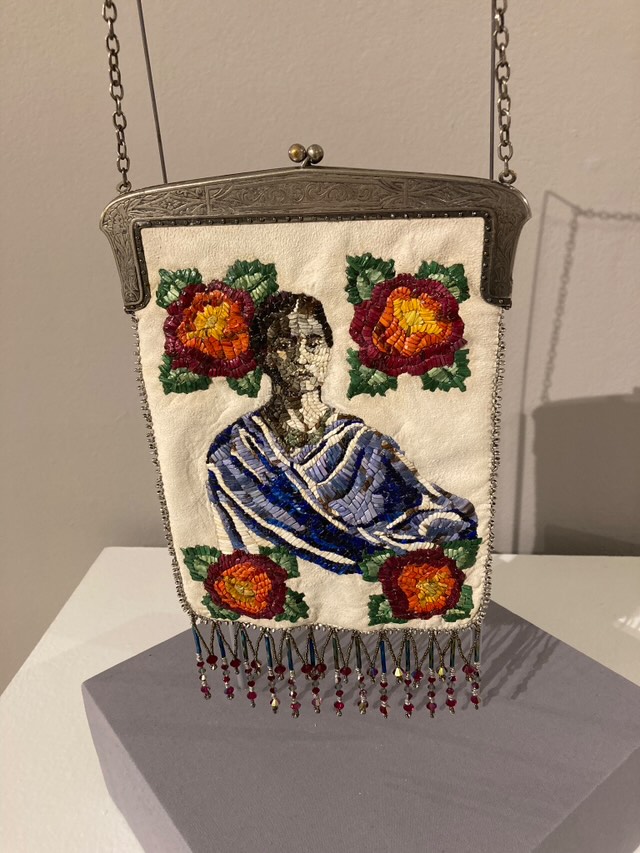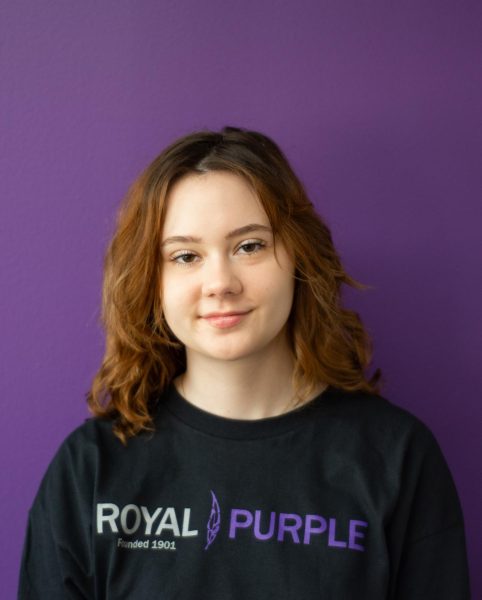Every year, the Annette and Dale Schuh Visiting Artist program brings in an artist to lead a course for art students at UW-Whitewater. This year is particularly notable because it gave students the unique opportunity to be taught traditional Native American art by an Indigenous person.
Melanie Tallmadge Sainz is a member of the Ho-Chunk Nation who specializes in creating basketry, quillwork and beadwork in an authentic Native American manner. She was invited to teach an eight week course in which students created pieces for the exhibit “Boundaries Vs. Connections,” which premiered Feb. 22.
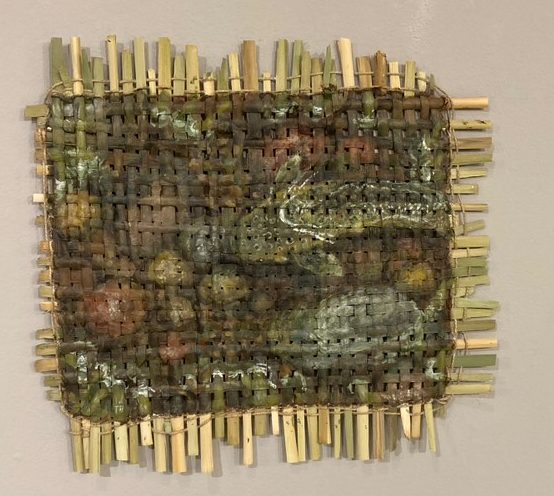
The exhibit’s “Conversation with the Artist” took place Feb. 28 for a full audience, including many Indigenous elders.
During this conversation, Sainz repeated the central theme of the exhibit, saying “We must acknowledge the negative before we can appreciate the positive.”
Aliyah Noh, who read UW-W’s land acknowledgement statement before the event, was one of the students with a piece featured in the exhibit. Noh’s piece, entitled “Look Where You Stand, You Cannot Erase Us,” echoes Sainz’s sentiment. The piece is a white boot with red crystals fastened to its sole.
“We’re all standing on so much blood,” explained Noh as they described how their piece represents the past and present genocides of the world.
“I wanted to make sure that while everyone is appreciating all this beautiful art in this exhibition, they don’t forget that so much has happened to dismantle and ruin the Indigenous community, and try to erase them,” Noh continued.
The sides of the shoe are painted with waves, along with the words “from the river…” on one side and “to the sea” on the other side to nod to the current situation in Palestine, Noh said. The quote is a rally slogan that became popular in the 1960s due to a political protest in Palestine of Israel’s control over the region; the quote is typically followed by “Palestine will be free.”
Noh painted the Thunderbird on the toe of the shoe. The Thunderbird is a Native symbol throughout multiple tribes that is considered to be a very powerful and protective being, meant to symbolize the ability for native people to protect each other through all the hardships that they face, explained Noh.
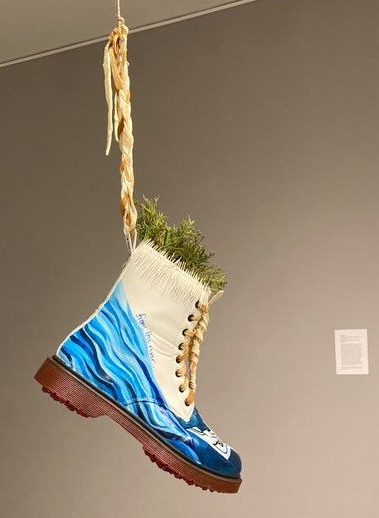
Other elements on the piece were porcupine quills, braided deer hide, and cedar, which were used to represent growth and resilience in order to make the piece not entirely negative. Noh described the process of using these natural materials in a way that honors native traditions.
They explained that Sainz found deceased porcupine and deer to give them a new life by becoming art. She even taught students how to remove the quills from the porcupine.
Noh felt connected to their Indigenous ancestral roots through collecting cedar from their backyard. They gave an offering and thanked the earth in order to gather the plant, a practice they said they haven’t done for quite some time.
“It was a really enriching experience,” said Noh.
“Boundaries Vs. Connections” will run until March 21 in the Crossman Gallery, located in the Center of the Arts. The gallery is open Monday-Thursday from 11 a.m. to 6 p.m.
The next exhibit for the Crossman Gallery will be the “Spring 2024 BFA Entry & BFA Junior Review.” The exhibit will open April 1 and close April 4, with a reception from 5-6 p.m. on its opening day.
